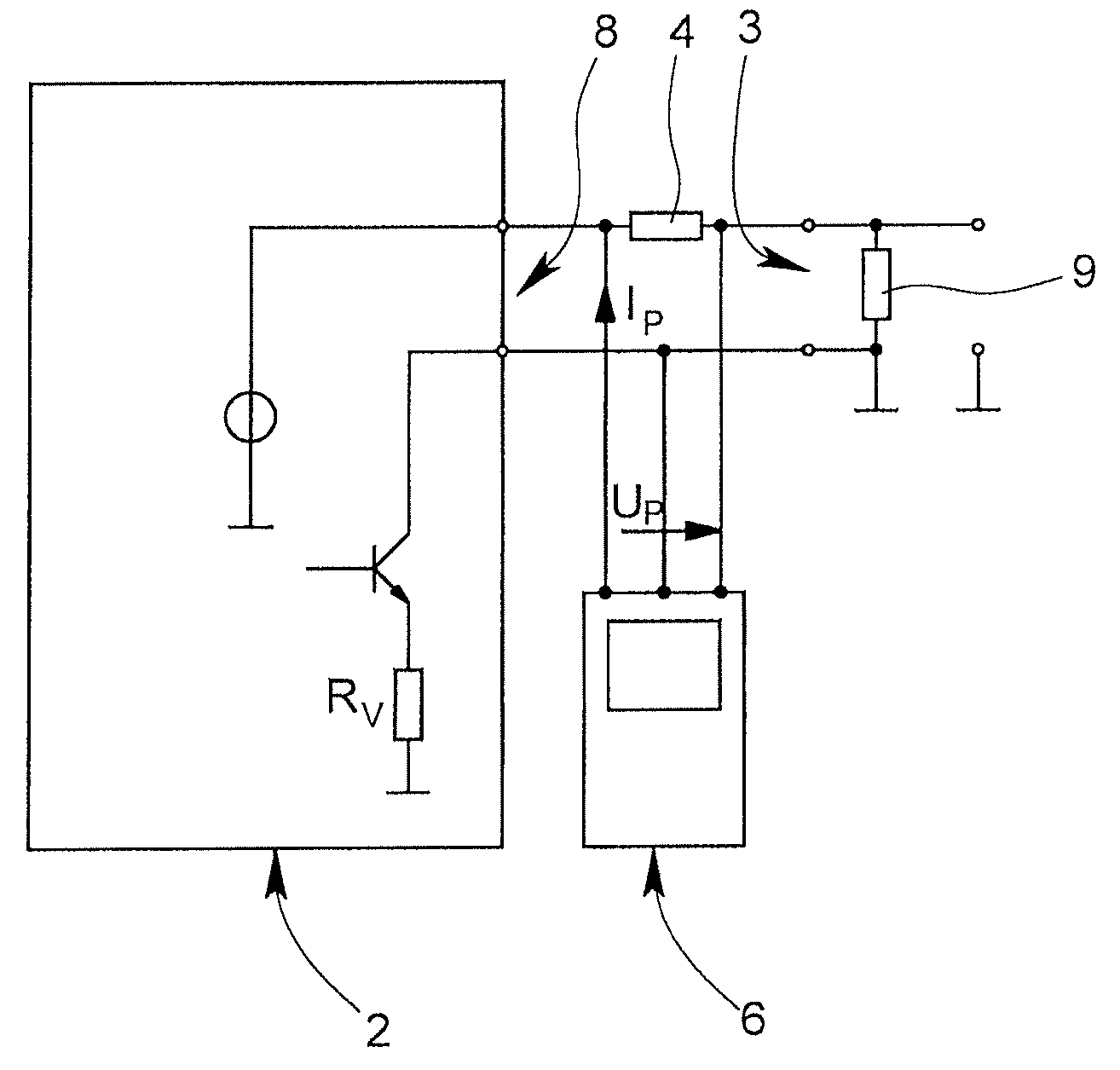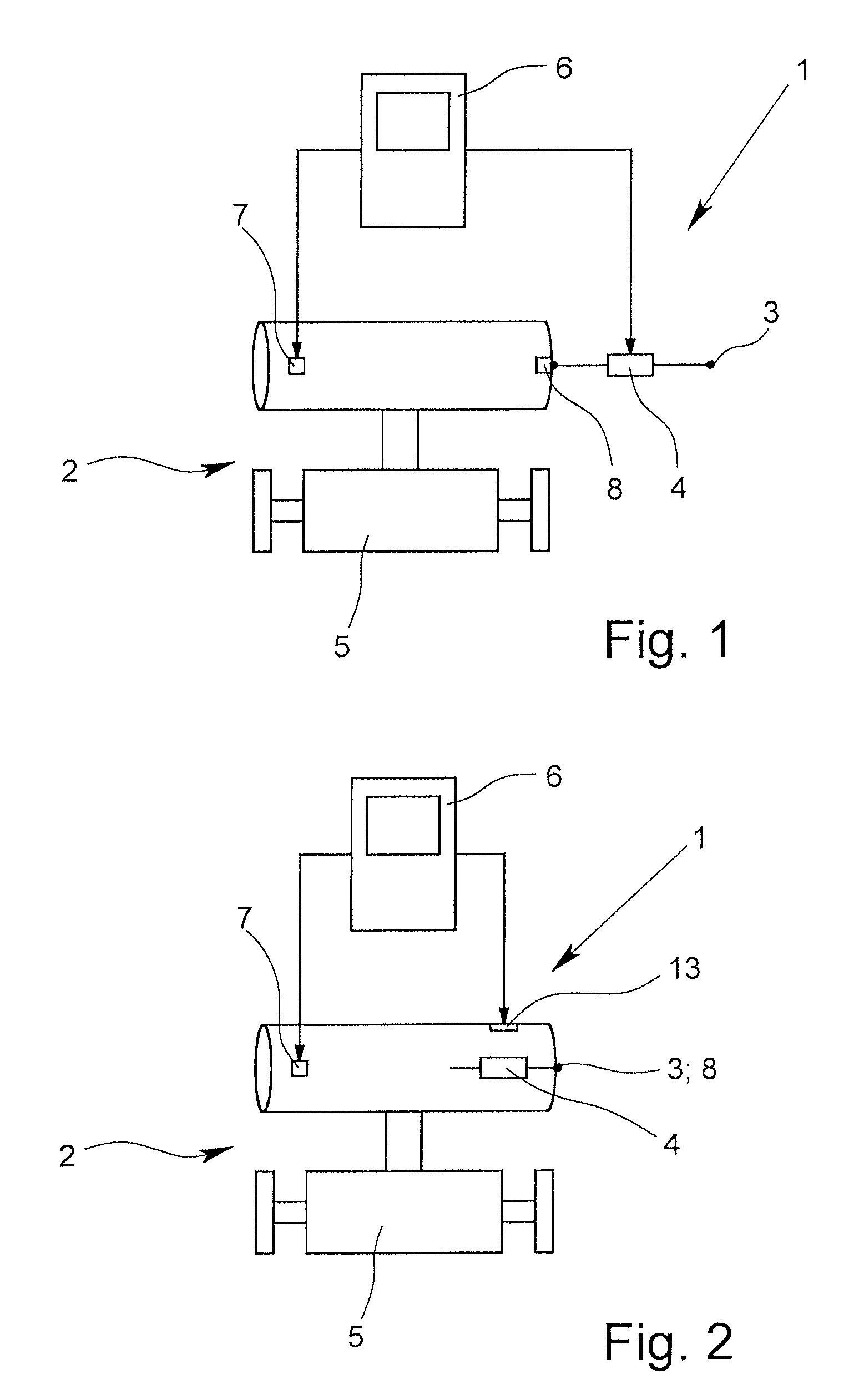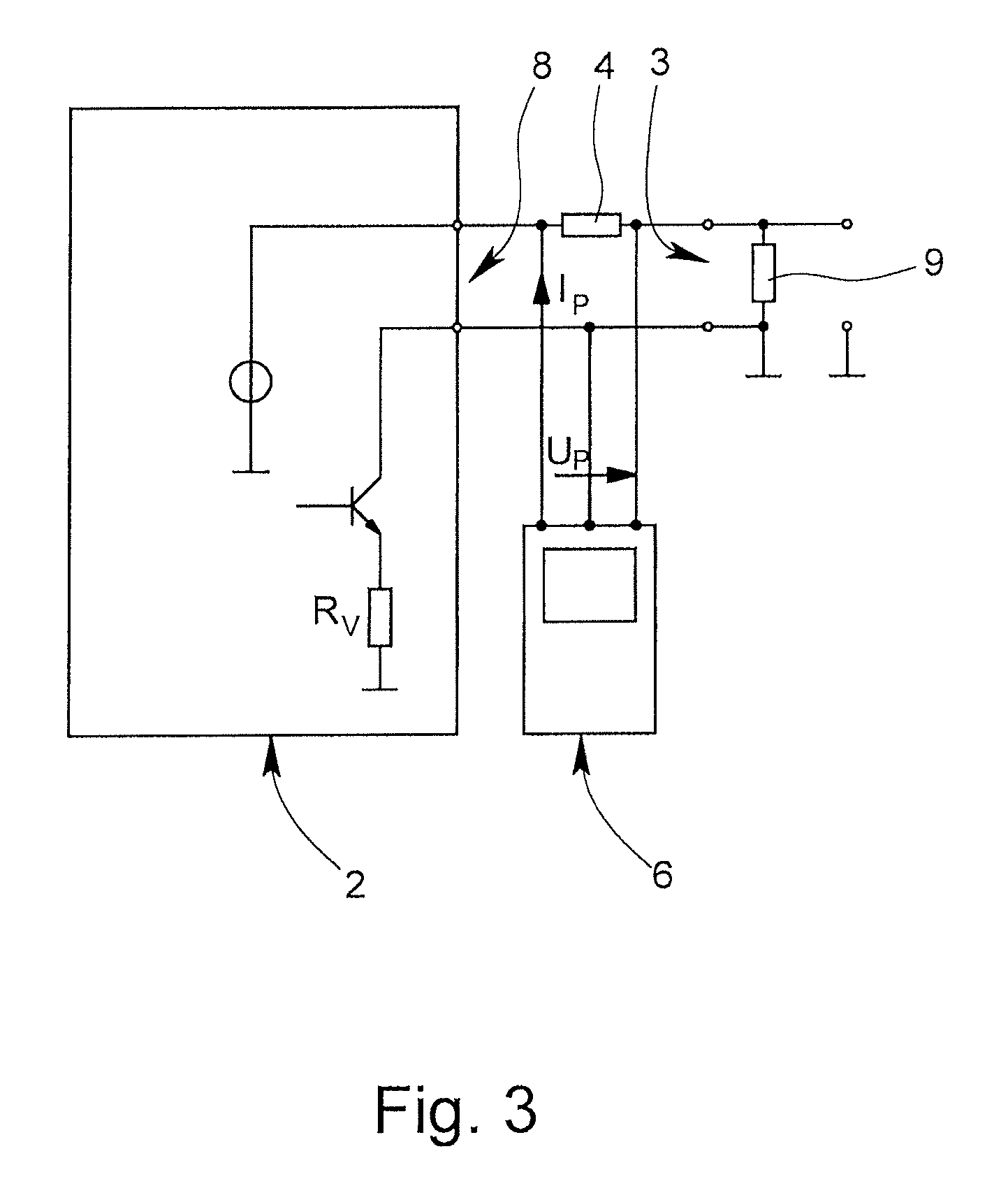Testing of a measuring device arrangement, corresponding measuring device arrangement and test arrangement
a technology of measuring device and test arrangement, which is applied in the direction of measuring device, instruments, etc., can solve the problems of not always possible, state cannot be started up in the manner of test, and the length of the test is very complex
- Summary
- Abstract
- Description
- Claims
- Application Information
AI Technical Summary
Benefits of technology
Problems solved by technology
Method used
Image
Examples
Embodiment Construction
[0031]FIGS. 1 & 2 each show a different exemplary embodiment of a measuring device arrangement 1, the figures not being representations in the sense of specific electrical circuit diagrams, but rather being intended to illustrate the active relationships between the different components. The highly schematic components of possible implementations of a measuring device arrangement 1 according to FIG. 1 which are shown in FIGS. 3 to 5 are intended to fundamentally illustrate some details. The extracts from two schematic circuits for testing of parts of a MID as an example of a measuring device are shown in FIGS. 6 & 7. The behavior of an exemplary embodiment of the method in accordance with the invention for testing of a measuring device arrangement which is shown fundamentally as in FIG. 1 with a test arrangement in accordance with the invention in FIG. 8 describes basically a progression of the steps, another grouping or another succession likewise being possible and within the scop...
PUM
 Login to View More
Login to View More Abstract
Description
Claims
Application Information
 Login to View More
Login to View More - R&D
- Intellectual Property
- Life Sciences
- Materials
- Tech Scout
- Unparalleled Data Quality
- Higher Quality Content
- 60% Fewer Hallucinations
Browse by: Latest US Patents, China's latest patents, Technical Efficacy Thesaurus, Application Domain, Technology Topic, Popular Technical Reports.
© 2025 PatSnap. All rights reserved.Legal|Privacy policy|Modern Slavery Act Transparency Statement|Sitemap|About US| Contact US: help@patsnap.com



